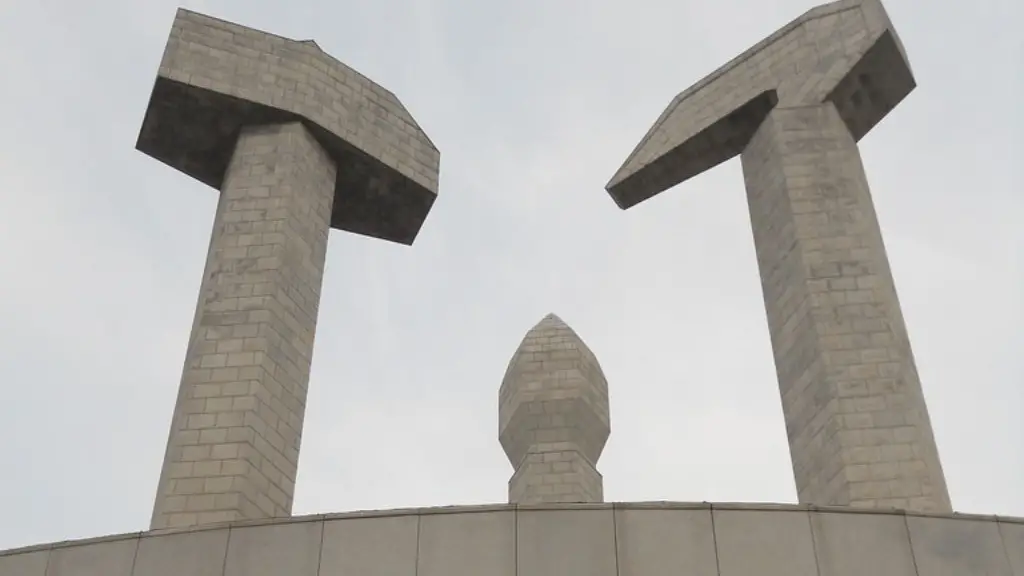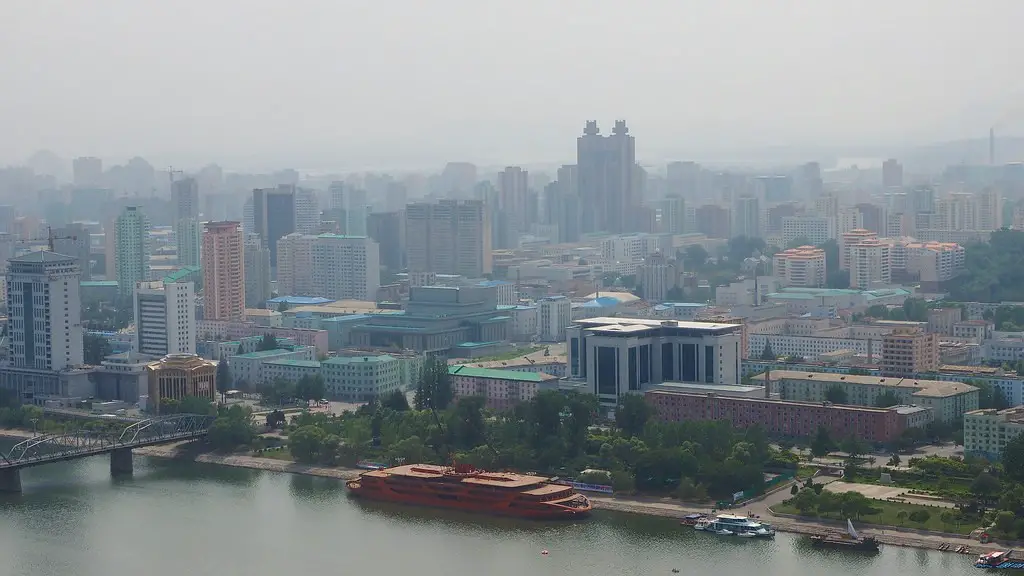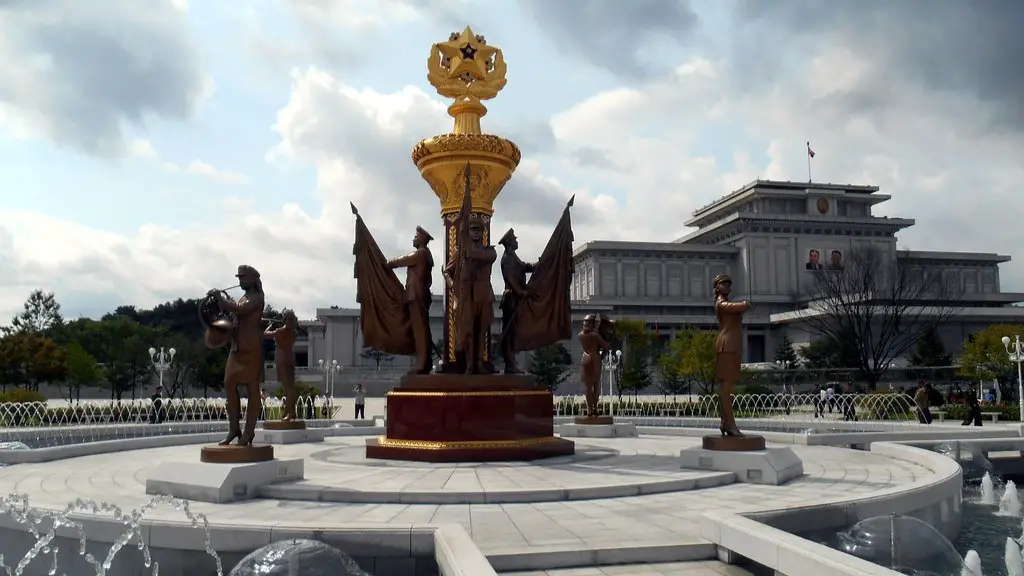North Korea’s controversial ballistic missile program has become increasingly ambitious in recent years. It is estimated they fired at least sixteen such tests in 2017 alone, resulting in increased diplomatic and political tensions between Pyongyang and the US. While the range of North Korean missiles remains unconfirmed, there are legitimate concerns that North Korea has the capability to reach US mainland targets with a nuclear-armed ICBM (intercontinental ballistic missile). This means that North Korea may feasibly be able to attack any point within the US, opening up window for a potential attack.
The key location that analysts believe could be vulnerable to such a nuclear attack is the US homeland extending from Alaska to the Mexican border. Whilst North Korean missiles may not yet be sophisticated enough to fly such a long distance accurately and with sufficient payload, US officials are still concerned that they could pose a serious threat if launched. Moreover, they are also concerned about the capability of North Korea’s missile technology to hit US military bases in the Asia-Pacific region.
Although it has been argued that North Korea is not likely to launch an attack on the US because it would mean the end of the Kim regime and the loss of North Korean sovereignty, this is not a guarantee that the nation would not launch a nuclear strike, nor is it an indication that the US currently has a credible plan to prevent such an attack. Of course, sanctions are in place to limit North Korea’s ability to develop and proliferate weapons, but there is no evidence that this has been successful in curbing the program.
When it comes to the US’s existing countermeasures, the US is prepared to shoot down North Korean missiles with a missile defense system. US officials have even claimed that their nation is fully prepared to counter a North Korean intercontinental ballistic missile attack and negate its effects. This is according to the newly revised US missile policy, ‘Ballistic Missile Defense Review’, which was released in January 2019. The review outlines a comprehensive strategy for protecting the US from ballistic missile attack.
Although plans to shoot down a missile have been made, the effectiveness of this defence system remains unchallenged and is still open to debate. The Pentagon itself has said that “no interception technology is 100% effective” and thus, it is uncertain as to whether the US missile defense system would be successful in defending the US from an attack from North Korean ballistic missiles, should Kim decide to launch one.
What Puts The US Most At Risk?
Analysts believe that Hawaii, Alaska and the US West Coast in particular, are the most likely targets for a North Korean missile strike. These areas are considered to be home to the largest concentration of military personnel, offering the greatest number of targets if Kim Jong-un were to proceed with a strike. In addition, the closest US military bases are in Hawaii, offering the least distance and highest chance of intercepting a North Korean missile.
The possibility of a successful North Korean attack on the US is also greater due to geography. The Pacific Ocean provides a natural barrier that would limit the extent of the damage if such an attack were to successfully reach the US mainland. Therefore, it is likely that a missile attack would focus on the US’s western seaboard, rather than central parts of the country. This is likely to be more damaging in terms of human and economic damage as the western US is home to a greater concentration of population.
Ultimately, it is difficult to know for sure what North Korea’s capability is, and how likely it is for the US to come under attack. Moreover, the US’s preparedness for such an attack is currently uncertain. Without more accurate intelligence on Kim’s nuclear capability and without more effective sanctions preventing North Korea from developing further, it could take years before the US is fully secure.
Preparing For A Potential Attack
Given the risk that North Korea represents, it is important that the US takes steps to protect itself. Having an effective missile defense system is one way, but it is also important that the US develops a comprehensive strategy to deal with the potential fallout of an attack. This includes the possibility of nuclear radiation, economic impacts, and even political repercussions. This is of key importance, as it is important that the US has a strategy in place to ensure the safety of its citizens and its own autonomy in the event of a North Korean strike.
The US also needs to take steps to improve its diplomatic ties with North Korea in order to reduce the risk of an attack. This could include negotiations with Pyongyang, or mediation from a third party. While the idea of dialogue with North Korea is controversial, it is an important part of reducing regional tensions that could ultimately lead to an attack.
For anyone concerned about a North Korean attack on the US, it is important to remember that while the risks are real and cannot be ignored, they are also not as likely to occur as some might think. North Korean capabilities remain largely unknown, and the US government continues to take steps to protect its people from a potential attack. Moreover, the US may still be open to diplomacy should Kim decide to move away from nuclear weapons.
Implications of A Nuclear Attack
If a nuclear attack were to happen, it would be a devastating event for the US that could have long-lasting implications. Nuclear explosions can cause significant damage in a very short period of time, including the destruction of whole cities and the contamination of large areas of land. The social and economic impacts of such an attack would be significant, with long-term effects that could be felt globally. Moreover, such an attack could also have lasting political implications, as the US and other nations struggle to come to terms with the incident.
Given the possibility of such devastating consequences, it is important that the US takes steps to reduce the risk of a North Korean attack, while also improving its preparedness to respond if one were to occur. This includes not only a comprehensive missile defence system, but also a strategy to account for the possibility of nuclear fallout and wider economic and political impacts. If a North Korean attack were to happen, an effective response would be key to reducing both the immediate and long-term suffering of the US and its citizens.
Risk of Cyber Attacks from North Korea
In addition, to the potential risk of a North Korean missile attack, US officials are also concerned about the threat of North Korean cyberattacks. North Korean hackers have been blamed for a number of cyber breaches around the globe, including a series of data breaches on US companies in recent years. Whilst these cyber-attacks are not likely to have an immediate and devastating effect like a missile attack, their long-term economic impacts could be just as damaging.
The US is taking steps to reduce the risk of North Korean cyberattacks, with increased investment into the country’s infrastructure and the implementation of better cyber security defences. However, such efforts can only be seen as effective if they can be combined with diplomatic efforts to reduce tensions with North Korea. Without this, there is still a risk that North Korea could launch a devastating cyber attack on the US, either as part of an overall attack on the country or as an act of retribution or revenge.
Negotiations for Peace
Given the potential for a North Korean attack, it is important that diplomatic negotiations are initiated to reduce the risk. Such negotiations could focus on North Korean disarmament, or on improving relations between the US and North Korea.
Negotiations could also include forms of economic assistance that are conditional on North Korea not developing or launching a missile attack. Such assistance could include aid packages to support North Korean citizens, boosting food security and reducing poverty in the nation. This could ultimately improve relations between the US and North Korea, as well as providing North Korea with an incentive to avoid launching a nuclear attack.
While this may be difficult, it is an important step to reducing the risk of a North Korean attack on the US. With negotiations, the US could potentially dissuade the Kim regime from pursuing a missile attack, while also offering North Korean citizens a better quality of life.
Alternative International Responses
The international community has an important role to play in reducing the risk of a North Korean attack on the US. This could include improving economic sanctions that are already in place, as well as providing alternative routes to North Korean prosperity that do not involve nuclear weapons.
International pressure must also be increased on North Korea to open dialogue and negotiate an end to the nuclear program. This could be accompanied by sanctions that target key figures within the regime and their corporations, making them incentivise negotiations. Such pressure may be a more effective way of dissuading North Korea from launching a missile attack than the US’s current policy of deterrence.
Ultimately, reducing the risk of a North Korean attack on the US is a complex issue involving multi-pronged strategies from both the US and the international community. With the stakes so high, it is important that all parties take steps to reduce the risk while improving the security of the US. Such efforts are the only way to ensure that the US is protected from a potentially devastating attack.




